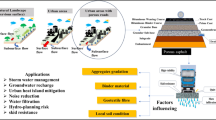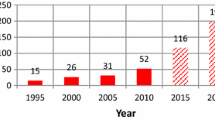Abstract
Most state highway agencies are being encouraged to change their pavement design procedures from the empirical-based procedure such as the AASHTO to mechanistic-empirical (M-E). Several issues need to be resolved before implementing M-E pavement design procedure in practice. One of the issues is that the design procedure should provide a consistent pavement performance level considering inherent variability associated with design input parameters and systematic bias of the design procedure itself. For a complete M-E pavement design procedure, the effects of input variability and model bias on predicted pavement performance must be quantified and considered. Some of the key principles for applying the reliability concept to M-E pavement design are presented in this paper. In particular, the selection of an appropriate reliability assessment technique and careful characterization of design input variability were considered because of their central role in calculating the reliability of pavement performance and determining the reliability-based safety factor of the pavement design procedure. In this paper, a reliability analysis model for evaluating uncertainties of existing M-E flexible pavement design procedures and a reliability-based pavement design approach using Load and Resistance Factor Design (LRFD) format are addressed.
Similar content being viewed by others
References
AASHTO (1985).Proposde AASHTO Guide for design of pavement structures, NCHRP Project 20-7/24, Vol. 2, American Association of State Highway and Transportation Officials, Washington, D.C.
AASHTO (1993).AASHTO guide for design of pavement structures, American Association of State Highway and Transportation Officials, Washington, D.C.
Ang, A. and Tang, W. (1975, 1984).Probability concept in engineering planning and design Volume-I and II, John Wiley and Sons, Inc., New York.
Christian, J.T., Ladd, C.C. and Baecher, G.B. (1994). “Reliability applied to slope stability analysis”.Journal of Geotechnical Engineering, ASCE, Vol. 120, pp. 2180–2207.
Hallin, J.P., Darter, M.I. and Witzack, M.W. (2001). “Development of the 2002 guide for the design of new and rehabilitated pavement structures.” Workshop for 2002 guide for mechanistic pavement design guide: issues in development and implementation,80 th Annual Meeting of Transportation Research Board, Washington.
Harichandran, R.S., Buch, N. and Baladi, G.Y. (2001). “Flexible pavement design in michigan: transition from empirical to mechanistic methods.”80 th Annual Meeting of Transportation Research Board, Washington, D.C., 2001.
Harichandran, R.S., Yeh, M.S. and Baladi, G.Y. (1990): “MICHPAVE: a nonlinear finite element program for analysis of flexible pavements.”Transportation Research Record 1286, Transportation Research Board, National Research Council, Washington, D.C. pp. 123–132.
Hasofer, A.M. and Lind, N.C. (1974). “Exact and invariant second-moment code format.”Journal of the Engineering Mechanics, ASCE, Vol. 100, pp. 111–121.
Noureldin, S.A., Sharaf, E., Arafah, A. and Al-Sugair, F. (1994). “Estimation of standard deviation of predicted performance of flexible pavements using AASHTO model.”Transportation Research Record 1449, Transportation research board, national research council, Washington, D.C., pp. 46–56.
Rackwitz, R. and Fiessler, B. (1978). “Structural reliability under combined random load sequences.”Computers & Structures, Vol. 9, pp. 489–494.
Ravindra, M.K. and Galambos, T. (1978). “Load and resistance factor design for steel.”Journal of Structural Division, ASCE, Vol. 104, pp. 1337–1353.
Timm, D., Birgisson, B. and Newcomb, D. (1998). “Variability of mechanistic-empirical flexible pavement design parameters.”Proceedings of the Fifth International Conference on the Bearing Capacity of Roads and Airfields, Vol. 1 Norway, pp. 629–638.
Timm, D.H., Newcomb, D.E., Birgisson, B. and Galambos, T.V. (1999).Incorporation of reliability into the minnesota mechanistic-empirical pavement design method, Final Report Prepared to Minnesota Department of Transportation, Minnesota Univ., Department of Civil Engineering, Minneapolis.
Von Quintus, H., Killingsworth, B.M., Darter, M.I., Owusu-Antwi, E. and Jiang, J. (1997).Catalog of recommended pavement design features, Final Report, NCHRP 1-32, Transportation Research Board, National Research Council, Washington, D.C.
Author information
Authors and Affiliations
Corresponding author
Additional information
The manuscript for this paper was submitted for review on May 13, 2002.
Rights and permissions
About this article
Cite this article
Kim, H.B., Lee, S.H. Reliability-based design model applied to mechanistic empirical pavement design. KSCE J Civ Eng 6, 263–272 (2002). https://doi.org/10.1007/BF02829149
Issue Date:
DOI: https://doi.org/10.1007/BF02829149




